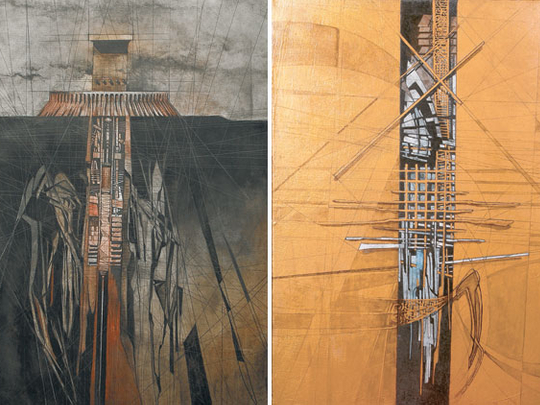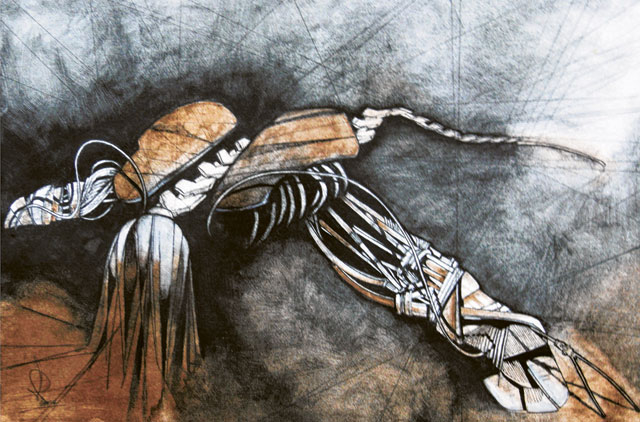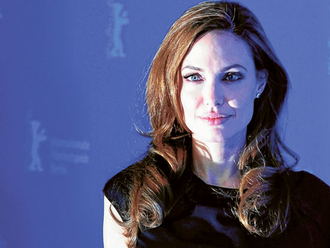
Dr Taha Al Douri studied architecture in the United States and is at present assistant dean at the School of Architecture and Design of the New York Institute of Technology's Abu Dhabi campus. But he is also an accomplished artist.
"I refuse to be classified as an architect who paints because I have been painting since childhood," says the Jordanian of Iraqi origin.
His first solo exhibition in the UAE, titled On the Duality of Existence, traces his evolution as an artist over the past two decades. The show includes his early classical-inspired work, later more expressionistic paintings and his recent work, which blends his knowledge of architecture and classical aesthetics with a contemporary sensibility to create his own distinct style.
Weekend Review spoke to Dr Taha Al Douri about his art and the art scenario in the UAE.
How has your classical work influenced your art?
I began by doing classical portraits, because I wanted to perfect realistic figurative details before moving into expressionism. When I draw, I start with a substructure. For example, in my painting titled Clandestine, which questions the fine line between concealing and beautification, I drew the face of a woman before covering it with a veil. You can see that classical realism in the way I have detailed every feather in the wings depicted in La Victoire Divine.
How has being an architect influenced your art?
After studying architecture I became interested in light and shade, textures, surfaces, how materials feel and how to project the third dimension in two-dimensional paintings. Also, my eye became sensitive to perspective. This is important because if the perspective is correct, even an untrained eye feels more comfortable looking at it without knowing why. In 1995, when I began my doctorate in architecture, I got interested in the combination of space and figurative impressions and that duality still exists in my paintings. My recent work is close to realism but explores the relationship between components of reality. I am in the phase of raising questions now.
What kind of questions are you exploring?
Questions about perception. I believe there is no absolute reality and that perception is reality. I have tried to stretch the limits of normal perception into other possibilities to explore questions about handling perception, being able to communicate it to the senses and turning it into something the senses can detect.
Has your evolution affected your choice of media?
Earlier I worked a lot with ink, pencil and charcoal. Now I have developed a technique of using brush on crayons, which gives me the smoothness I want. I have recently starting using oil paints and gold leaf. My aim is to play with light and shadow, because lighting is the most powerful tool to create illusions and magnifying the sensation in a painting so viewers can feel it.
What inspires you as an artist?
My inspiration comes from everything around me. For instance, while watching TV images of the 2006 Israeli attack on southern Lebanon, I observed a sense of aesthetics in the destruction, because buildings fall according to their structural logic. I documented my impression of this destruction with stark ink drawings titled Erosion of Tectonics, Integrity of Infrastructure and The Tranquility Above. The crumbling walls, the tentacle-like foundations, the molten railings and the broken cables tell the story through architecture. On the other hand, Architectural Mysticism and Myth was painted for the cover of my book on the cosmological references in architecture and depicts the golden pyramid, one of the oldest symbols of architecture. My job as a designer of health care facilities influenced the painting Infusion, which was done for an exhibition in New York on the theme of peace. The building in this painting doubles as a piston for the syringe shown underground; and the work addresses the forced infusion of culture or ideology into an unwilling entity, which is happening at every level in our society and prevents peaceful coexistence.
Why did you choose the title ‘On the Duality of Existence' for this exhibition?
Life is often abstracted into dualities, the contrast which makes for the flow of energy in action and passion. I am interested in exploring dualities such as heaven and Earth, male and female, good and evil, reality and illusion and the horizon between the two, being the line of contact, communication, separation, difference and similarity. Exploring these dualities is an attempt to comprehend the complexity of life.
As an educationist, what is your view on the art scene in the UAE and what more needs to be done?
It is good to see that the UAE realises the importance of fine art in the development of a nation and has made itself noticed on the world art map. The need is to encourage an art movement that is regional and develop an Arab artistic identity based on our desert, maritime and trading culture. The UAE's peaceful, historical trading ties should be expressed in art. The emphasis should be on art and architecture education that generates home-grown designers who spring from the environment and want to represent it.
- Jyoti Kalsi is a UAE-based arts enthusiast.
- On the Duality of Existence is organised by Vindemia Art and Antique Gallery and will run at the Kempinski Hotel, Mall of the Emirates, until January 2, 2011.












